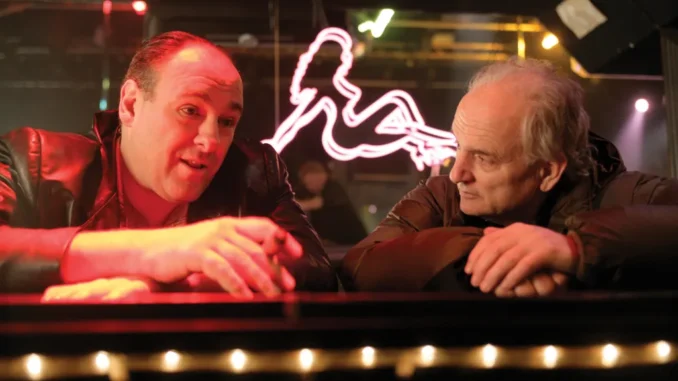
When you think of groundbreaking television, The Sopranos inevitably springs to mind. Created by David Chase, this iconic series reshaped the gangster genre, offering a raw and intimate look at the life of Tony Soprano, portrayed masterfully by James Gandolfini. Over six unforgettable seasons, the show delved into themes of family, identity, and morality, blending complex character arcs with shocking plot twists and a finale that sparked endless debate. Recently, in a roundtable interview with Empire celebrating 25 years since its debut, Chase opened up about his two favorite moments from the series. Spoiler alert: they’re surprisingly tender!
The Heart of The Sopranos: Emotion Over Violence
Chase emphasizes that his favorite moments stray far from the show’s trademark violence. Instead, they spotlight the emotional depth of the characters and their relationships. This perspective underlines the heart of The Sopranos, a series that often gets pigeonholed into the “gangster” label without acknowledging its broader emotional and psychological exploration.
Scene 1: The Weight of Candy
One standout moment comes from Season 4, Episode 4, titled “The Weight.” In this scene, Johnny Sack discovers a hidden stash of candy belonging to his wife, Ginny. The revelation leads to a poignant confrontation, as Ginny, overwhelmed with emotion, kneels and reveals her feelings of inadequacy.
“She starts to cry,” Chase recalls, “and she says that she knows that the other guys all look at their wives with appreciation. That scene makes me want to cry.”
This moment exemplifies the show’s ability to evoke genuine emotional responses. It’s not just about mobster machinations; it’s about love, vulnerability, and the pressure of expectations in a world that often prioritizes power over personal connections.
Scene 2: The Finale and “Don’t Stop Believin’”
Chase’s second favorite moment comes from the controversial series finale. As Meadow Soprano rushes toward the family’s chosen meeting spot, the familiar strains of Journey’s “Don’t Stop Believin’” fill the air. For many viewers, this moment is iconic, serving as the last joyful beat before the series takes its infamous plunge into ambiguity.
“When I hear ‘Don’t Stop Believin’,” Chase reflects, “when I see Meadow running towards that restaurant… it still gets me today.”
There’s a palpable tension in this scene, a bittersweet combination of nostalgia and impending dread. For Chase, it encapsulates everything that The Sopranos represents—the complex interplay of hope and despair, joy and uncertainty.
Why These Moments Matter
So, why do these scenes resonate so deeply with both Chase and the audience? Here are a few reasons:
1. Human Connection Over Violence
While The Sopranos certainly delivers its fair share of violence, the most memorable moments often revolve around human connections. By highlighting the emotional struggles of characters like Ginny and Meadow, Chase reminds us that even the toughest mobsters are deeply flawed humans dealing with real emotions.
2. Character Depth and Development
The richness of the characters adds layers to these scenes. Ginny’s vulnerability reflects the pressure on women in the shadow of powerful men, while Meadow’s journey symbolizes hope and the search for identity amid chaos. These character arcs provide a backdrop for scenes that, on the surface, might seem simple but carry immense weight.
3. Timeless Themes
Themes of love, betrayal, and identity are universal. They transcend the specific context of the mob world, making these scenes relatable to anyone who has grappled with similar issues. Whether you’re a fan of crime dramas or not, the emotions portrayed in these moments speak to the human experience.
The Cultural Impact of The Sopranos
It’s impossible to discuss The Sopranos without acknowledging its impact on television as a whole. The show paved the way for future series to explore complex characters and nuanced storytelling. Shows like Breaking Bad, Mad Men, and even newer hits like Succession owe a debt to Chase’s groundbreaking work.
A New Era of TV
Before The Sopranos, television was often dismissed as a lesser art form compared to film. Chase and his team demonstrated that the small screen could explore intricate narratives, multi-dimensional characters, and deep emotional themes. This shift has allowed modern shows to tackle more serious subject matter, making viewers think and feel in ways they hadn’t before.
An Ongoing Conversation
The discussions surrounding The Sopranos haven’t died down; if anything, they’ve intensified over the years. From debates about the finale to analyses of character motivations, fans continue to engage with the show, ensuring its place in the cultural conversation.
Conclusion
David Chase’s reflections on his favorite scenes from The Sopranos provide a fresh perspective on what makes the show a masterpiece. By focusing on emotional depth rather than violence, Chase reminds us that at its core, The Sopranos is about the complexities of the human experience. Whether it’s Ginny’s heartfelt confession or the tension-filled finale, these moments resonate because they echo our own struggles and triumphs.
As we celebrate the legacy of The Sopranos, it’s clear that its influence continues to shape the landscape of television today.
